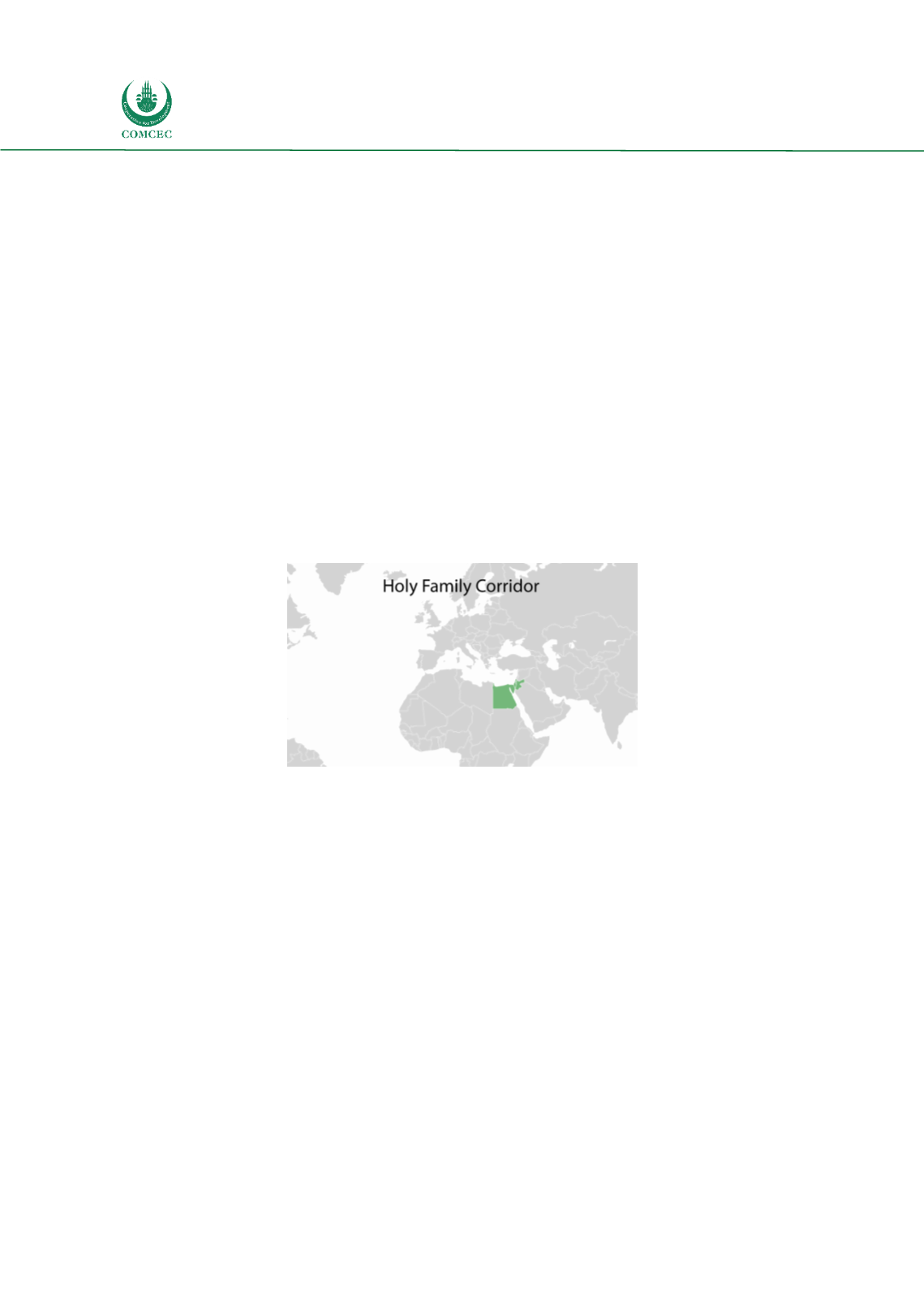

Sustainable Destination Management
Strategies in the OIC Member Countries
176
5.5.
Recommendations for Existing OIC Corridors
This chapter takes into account the findings of the study and applies the policy framework on
existing OIC country corridors. Due to the complexity of each corridor and the multi-lateral co-
relations required to set-up each MDTC, it is not possible at this point to provide detailed policy
recommendations. They would have to be created in a working group with the governments in
collaboration with the private sector. Each corridor should have a clear action plan on which
policies and initiatives are required to achieve the agreed-upon goal for the particular MDTC.
Both of these corridors would be assessed as new corridors. Even though the Holy Family Route
is already known to travelers, it has not been formally established and not jointly managed by
the countries. This means that all initial assessments are still required before formalizing the
corridor.
The Holy Family Corridor
Figure 50: Map of Countries of the Holy Family Corridor
Source: DinarStandard
When looking at the development of a corridor, one has to first assess the current situation.
The scatter graph below shows that among all the OIC countries, Jordan and Egypt are
positioned in different quadrants based on Tourism Readiness and International Openness.
Jordan is overall less tourism ready than Egypt, while at the same time being more
internationally open. Both countries have a similar economic dependence on tourism, which is
indicated through the circle size. To achieve benefits for both countries and provide a seamless
tourism experience, both countries could use the Holy Family Corridor to move further to the
top right to attract more tourism.
















